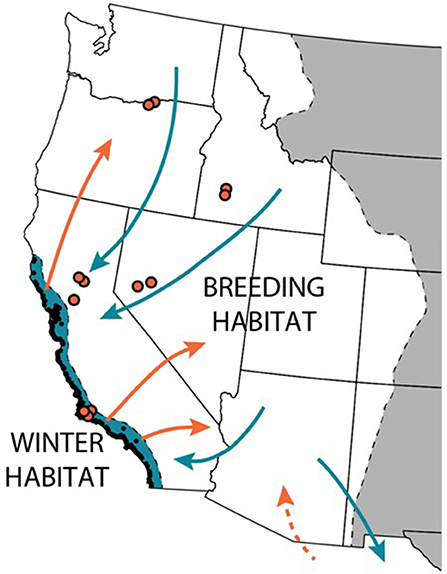
Monarch Butterfly Numbers in North America Drop to Almost 30-Year Low

# Monarch Butterfly Populations Plunge to Near-Record Low in 2024
## A Stunning Emblem of Change Faces Challenges
The monarch butterfly has been celebrated as an emblem of change, both in a physical and metaphorical sense. These fragile creatures, adorned with their eye-catching black and orange patterned wings, experience an extraordinary transformation from caterpillar to butterfly. Beyond their visual appeal, monarchs are vital to ecosystems, pollinating various flowers and providing a crucial food source for numerous species. Nevertheless, these iconic butterflies are threatened by climate change, habitat loss, and harmful pesticide exposure.
In 2024, conservation organizations raised alarms as the western monarch butterfly population fell to its second-lowest level in almost thirty years. With merely 9,119 monarchs documented overwintering along the California coast—a shocking 96% plunge from the prior year—scientists and conservationists are increasingly alarmed about the species’ future.
—
## The Monarch’s Remarkable Migration
Monarch butterflies are originally from North America and are famous for their annual migration, considered one of the most remarkable phenomena in the insect world. As temperatures drop in the fall, monarchs traverse thousands of miles in search of warmth. Monarchs east of the Rocky Mountains typically journey to Mexico, while those to the west settle along the California coast. This seasonal expedition, known as **overwintering**, helps the species persist despite harsh winter conditions in their breeding habitats.
The migration of western monarchs to California has been meticulously monitored by the **Xerces Society for Invertebrate Conservation**, a nonprofit focused on protecting invertebrates and their ecosystems. Since 1997, the organization has tracked overwintering behaviors in California and Arizona, uncovering alarming declines in population counts.
Although monarch butterflies demonstrated resilience in the past—recovering from a historic low of just 1,901 butterflies in 2020—the drastic drop from 233,394 in 2023 to a mere 9,119 in 2024 raises serious alarms regarding the species’ potential for recovery.
—
## What’s Behind the Decline?
Multiple environmental and anthropogenic factors are driving the swift decline of monarch butterflies.
### **1. Habitat Destruction and the Vanishing Milkweed**
Monarchs rely on **milkweed** for their survival. This flowering plant is the exclusive host for monarch eggs and serves as the sole food source for caterpillars before they transform into butterflies. Unfortunately, increased urban development, extensive agricultural growth, and deforestation have led to a dramatic reduction in milkweed populations.
Moreover, the application of herbicides and pesticides not only eradicates milkweed plants but also directly endangers monarch butterflies at various lifecycle stages. A recent report by the **Monarch Joint Venture** indicated that habitat loss—primarily driven by agriculture and urbanization—remains a primary contributor to declining monarch populations.
### **2. Intense Heat and Climate Change**
Escalating temperatures attributed to climate change have also inflicted severe consequences. Monarch butterflies are sensitive to temperature, with extreme heat events posing a significant threat to their existence. In 2023 and 2024, the western United States encountered extreme heat waves, with temperatures exceeding **100°F (38°C)** on numerous occasions.
Emma Pelton, a biologist specializing in endangered species at the Xerces Society, mentioned that monarchs are especially susceptible when temperatures surpass **108°F (42°C)**—a threshold that many of their habitats crossed last year. Certain regions in the West even recorded temperatures soaring to **124°F (51°C)**, rendering survival nearly impossible for these butterflies.
### **3. Pesticide Exposure**
The pervasive use of pesticides in farming and landscaping constitutes another significant risk to monarchs. Many of these chemicals, intended to eliminate pests, inadvertently harm beneficial insects like monarchs. Research has indicated that pesticide exposure can lead to **physical deformities, reduced fertility, and shortened lifespans** in butterflies.
—
## A Promising Future? Conservation Efforts Gather Strength
Despite bleak figures, conservationists hold onto hope that decisive actions can protect monarch populations. A notable advancement is the potential **reclassification of the monarch butterfly as a “threatened” species** under the U.S. **Endangered Species Act**.
If the **Fish and Wildlife Service** moves forward with this classification—anticipated to be finalized by **December 2025**—the designation would provide monarchs with essential legal protections, prohibiting the killing, transporting, or disturbing of these butterflies and their habitats.
Such a decision could result in the formal designation of over **4,300 acres of land** across several California counties as **protected areas for monarch overwintering**, promoting safer migratory routes and breeding grounds.
Conservation organizations also urge individuals to get involved by planting **native milkweed and nectar-rich flowers** in their gardens,